A call for help
Jazmyne Eng worried a lot about being harmed by others – a perpetual symptom of her schizophrenia.
Clutching a small hammer, she walked into the Asian Pacific Family Center in Rosemead, where she’d been receiving treatment for her mental illness for 12 years.
The clinic director called the local Los Angeles sheriff’s station for help, telling a dispatcher she was a “low-level” threat and of “small stature.” Eng was 40, stood under 5 feet and weighed less than 100 pounds.
Dr. Glenn Masuda told the dispatcher Eng suffered from psychosis and was sitting “very calmly” in the lobby with the ballpeen hammer in her lap.
“She’s not immediately violent, but I don’t want her to get to that level,” Masuda is heard on tape telling the dispatcher. “I don’t want it to escalate.”
But when four deputies arrived on Jan. 4, 2012, one pulled out his Taser, the other his gun and the group walked inside.

What happened next is an extreme example of how badly things can go when someone is in a mental health crisis and police are called to help.
Law enforcement officers are among a short list of professionals entrusted with the power to take people to the hospital for a 72-hour commitment against their will. But officials acknowledge these cases are among the most difficult for officers to handle — and they too often get it wrong.
“It’s a catch-22: where else can you call but 911?” asked Los Angeles County District Attorney Jackie Lacey. “You have to hope that the officer who responds is well trained — and if they’re not, then you may be looking at seeing your loved one carried out in a body bag.”
It’s a catch-22: where else can you call but 911?
The deputies were already armed when they ordered Eng to give up her hammer. Instead, the paranoid woman advanced at the armed deputies, according to official accounts.
Deputy Daniel Esqueda fired a Taser dart, which didn’t penetrate her clothing.
Then Eng “charged towards the deputies with the raised hammer,” they told investigators. That’s when Deputy Brian Vance — a 16-year veteran of the department — fired two rounds. Read the district attorney’s declination letter regarding Jazmyne Eng’s death
Mental Illness And Officer-involved Shootings
KPCC’s analysis found about 11 percent of people shot by law enforcement officers between 2010 and 2014 showed signs of mental illness, according to prosecutors.

For 17 of them, prosecutors said police were summoned because the person was suicidal or in danger of self-harm and ended up shot by officers.
Mental health issues were noted in at least 41 officer-involved shootings in Los Angeles County between 2010 and 2014, according to a KPCC analysis of official case summaries from the D.A.’s office.
At least a dozen shootings occurred after friends, family and even mental health professionals called for help primarily because someone posed a threat to himself or herself, KPCC found.
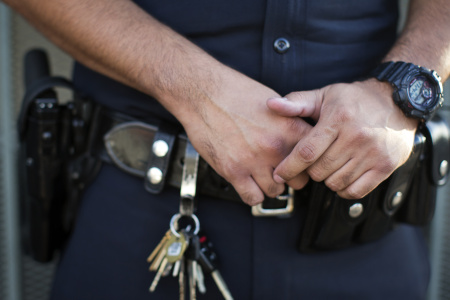
Police Encountering More People With Mental Illness
One of the biggest challenges of policing Los Angeles County in the 21st century is how to interact with people with mental illness.
Last year, LAPD counted 13,813 crisis calls involving someone with mental health issues. They’ve logged a 26 percent jump in those calls this year.
One in five inmates in L.A.’s jails has a serious mental illness — a proportion that has risen in recent years, according to sheriff’s officials. They estimate as many as 40 percent of those they’re compelled to use force against have suffered from mental illness.
William Terrill, an associate professor in the school of criminal justice at Michigan State University, said standard training doesn’t adequately prepare officers to deal with those with mental illnesses.
[Officers are] coming at it from a perspective, I think, that tends to overstress rationality.
“Officers are more often than not trained to interact and engage in the force continuum starting with presence, just showing up, and then using your voice, and then using potentially forceful tactics,” he said. “They’re coming at it from a perspective, I think, that tends to overstress rationality.”
Someone who’s not stable — either because of mental illness, or alcohol or drugs — may not be getting those cues, he added.
In KPCC’s examination of officer-involved shootings between 2010 and 2014, D.A. summaries made mention of 279 people failing to “follow commands.” Of those, 43 percent involved a person with mental illness or signs of intoxication.
Many large law enforcement agencies have tried to deal with the problem through special mental-health response units. LAPD has one of the most robust units in the country, consisting of specially-trained officers and clinicians.
But Lt. Brian Bixler, who heads the department’s Mental Evaluation Unit, said they are “secondary responders” — meaning they come in after patrol cops have taken control. Their job is simply to link the person who needs services with what’s available — or sometimes give advice.
It doesn’t seem to be a solution for volatile situations.
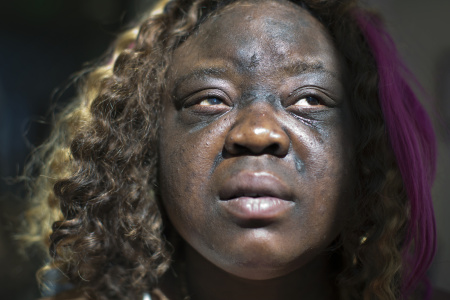
Kamisha Davidson got into a showdown with the Los Angeles Police Department after her mother called the county’s psychiatric emergency help line, hoping someone would take her daughter to a hospital mental health ward.
Davidson, then 30 years old, was off her medications for bipolar disorder.
“She’ll hit herself, scratch herself, hit her head on the wall. She cusses at anyone she talks to,” her sister told the police officers who showed up, according to the D.A. report on the case. “She only gets violent with herself, she’s never gotten violent with anyone else.”
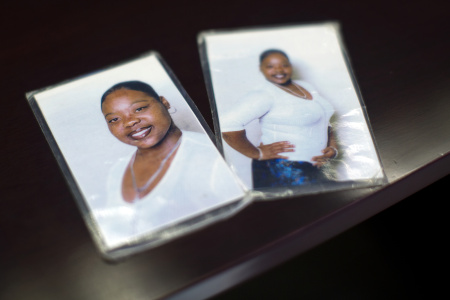
The officers called the department’s Mental Evaluation Unit — twice.
They were still waiting for a call back when Davidson got out of bed and tried to walk out of her room.
According to the D.A.’s summary, LAPD Officers James Saxton and Elden Marquez tried to block her path and grab her arms. She struggled — and allegedly bit Marquez and pushed him over — before grabbing “a white stick containing protruding nails from the wall.”
Saxton fired a single shot, striking Davidson in the stomach. Davidson survived.
“I don’t know why they didn’t just back off,” said attorney Yana Henriks, who sued the city on Davidson’s behalf. The county agreed to pay $500,000 to settle.
The Los Angeles District Attorney’s Office found Saxton shot in self-defense. The Los Angeles Police Commission took issue with the officers’ actions leading up to the shooting, but found the use of lethal force justified. The officers did not return calls for comment. Read the district attorney’s declination letter regarding the shooting of Kamisha Davidson
Pressure To Resolve Situations, Quickly
In Jazmyne Eng’s shooting, a sheriff’s department panel assigned to review the officers’ actions didn’t like what it saw. It was concerned with Vance’s “perceived need to protect the life of others” over “the reverence for human life” — Eng’s.
The department’s oversight body had similar concerns.
In an unusually detailed report, officials with the Office of Independent Review argued Vance had many options other than his gun to try to subdue the diminutive woman.
Sheriff’s officials struggled with whether the shooting was in policy. In a rare decision, they left the case “unresolved” and decided not to discipline Vance for firing his gun.
Both deputies were suspended for using poor tactics leading up to the shooting — Vance for 15 days and Esqueda for five. Vance, who as of last month was still employed by the department, was removed as a training officer, and was taken off patrol for two years. The deputies did not return calls for comment.
Eng’s family sued Los Angeles County, claiming the four deputies — among them the 6-foot-7 inch, 235-pound Brian Vance had no right to use a stun gun or shoot the small woman.
Her sister, Nancy Eng, said the shooting was senseless. Paranoia was what drove Jazmyne to carry the hammer, and what drove her to seek help at the clinic that day.
“She was killed for being scared,” Nancy Eng said.

The county paid the family $1.85 million to settle the suit. But Los Angeles Sheriff Jim McDonnell defends the deputies.
“A person with a hammer — no matter what their size is — can kill you,” he said. “You either act and save yourself from great bodily injury or death or you wait and then it happens. You’ve got milliseconds in some cases to respond. It’s a giant decision and you go with your training.”
Many of the most dangerous and gruesome police shootings in Los Angeles County reviewed by KPCC involved people in mental health crisis.
In one case, a man came at officers with an axe. In another, officers shot a woman who was on top of a man, stabbing his head with a piece of glass. And in yet another, a man killed his mother and attacked his grandmother with a knife.
In 41 of the cases where mental illness was mentioned, KPCC found 8 of the people who were shot were carrying a firearm and 23 held other items, such as a knife, hammer, piece of plastic tubing, or — in one case — a "wooden dowel." One carried a non-functional handgun.
Nine of the 41 were unarmed.
… what you have is a showdown between one person who’s armed with a weapon – a gun usually – and one person who’s disobeying them.
Los Angeles civil rights attorney Brian Dunn said he thinks many shootings would be avoided if police slowed down a volatile situation, called for backup — and waited.
“What happens is the officer closes the distance, the officer draws some kind of weapon,” he said. “And what you have is a showdown between one person who’s armed with a weapon — a gun usually — and one person who’s disobeying them.”
Dunn represented the mother of Darrell Atkinson, a homeless military veteran who was shot by officers under the 10 Freeway.
Two deputies with the county’s transit bureau stopped Atkinson, who suffered from mental health issues, for riding his bike on the sidewalk on October 6, 2013. According to Dunn, they let him go, but then followed him. They eventually spotted him hiding behind a grocery cart under an overpass, according to the D.A. report.
Deputy Paul Morales approached Atkinson again. Morales said Atkinson got aggravated, grabbed a “wooden dowel” from the shopping cart, and marched towards him.
The deputy shot seven times, killing Atkinson. Morales did not return calls for comment. Read the district attorney’s declination letter regarding Darrell Atkinson’s death
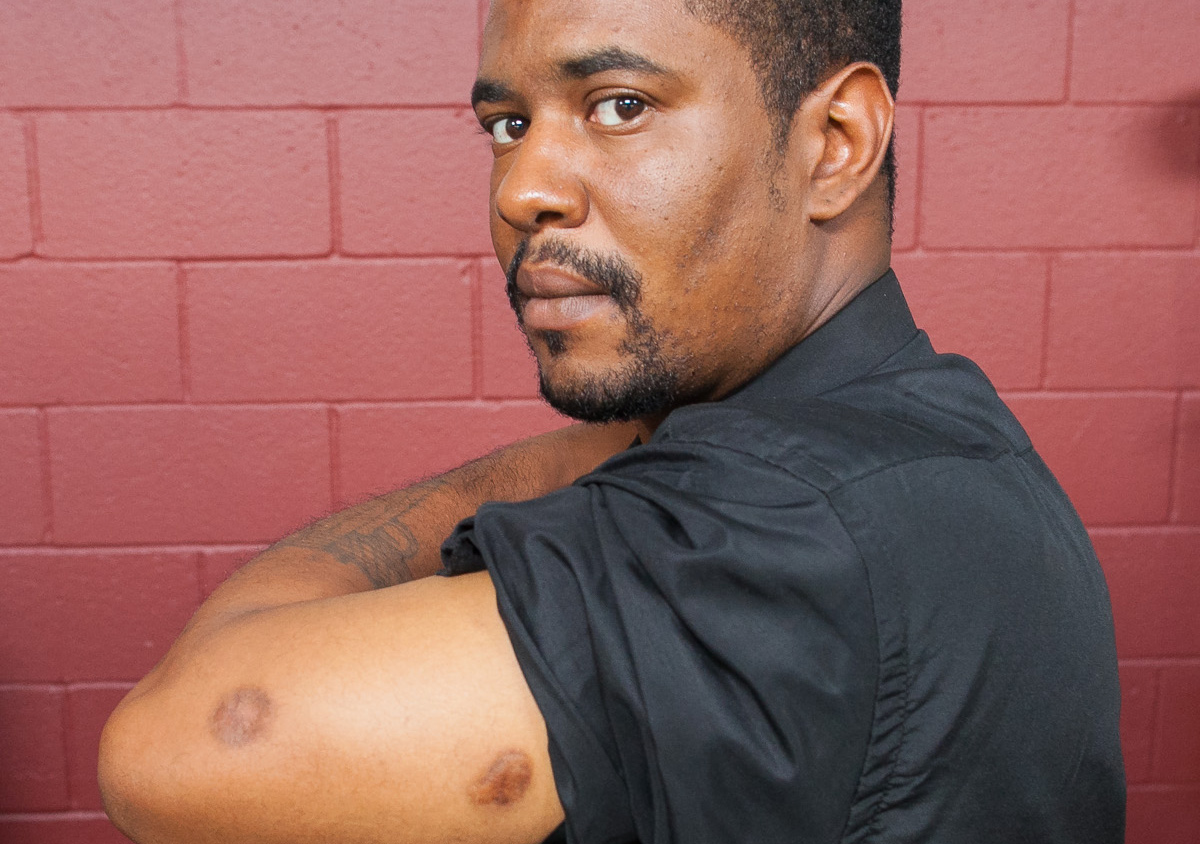
Mistaking Mentally Ill For Criminals
Two months earlier, two officers had shot Kenneth Vessell as he walked down Pacific Coast Highway. They told investigators he “looked like a robber.”
He was homeless, had been drinking and was suffering from paranoid schizophrenia.
Dash camera video from the patrol car shows the officers pulling up to Vessell, who is wearing a bandana over his face while striding purposefully and erratically down the sidewalk. They yelled for him to stop.
Vessell turns towards them on the dark street and pulls something out from under his shirt, pointing it at them.
Both officers shoot.
When they get closer, they realize the object is a bottle of Seagram’s Seven Crown.
“He’s 51-50, man, he’s 51-50,” one officer is heard saying on dash cam video — the legal code for involuntary commitment.
“I remember thinking: ‘I’m shot,’ ” said Vessell, who survived but still has trouble walking.
“I’m thanking the Lord every day,” he added. “The wrong move — or something could have gone the wrong way — and I wouldn’t be here today.” Read the district attorney’s declination letter regarding the shooting of Kenneth Vessell
I’m thanking the Lord every day. The wrong move – or something could have gone the wrong way — and I wouldn’t be here today.
Plaintiff’s attorney Ian Michael Wallach, who’s representing Vessell in a lawsuit against the city, said too often, officers assume they are dealing with a criminal when they roll up on a person acting erratically.
Lacey’s office found the officers who shot Vessell acted within the law — but she agrees training police to better recognize and understand mental illness will ultimately cut down on the number of these shootings.
“I do absolutely believe there’s something we can do,” she said.
She said she’s spearheading a campaign to train every officer in the county in a 16-hour course in mental illness.
Sheriff McDonnell, meanwhile, wants to train his 5,335 patrol deputies in a 40-hour crisis intervention course over the next six years. He said he’s starting with 480 deputies by next summer.
The training Lacey has in mind is a mental health awareness course modeled after a longer training by the Memphis Police Department, which focuses on building empathy for the mentally ill and understanding they may not respond rationally to commands.
It’s already started in Los Angeles, mostly at LAPD and now the L.A. County Sheriff’s Department, she said. Officers are being taught how to slow down situations, drop back, call for backup, and generally lower the temperature and slow the pace of a crisis.
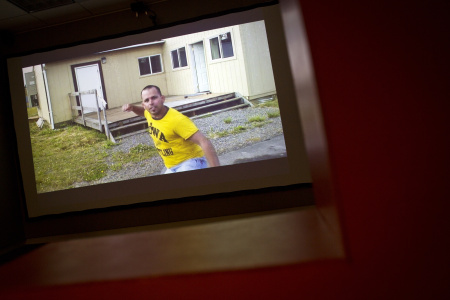
Is Training The Answer?
As law enforcement responds to a nationwide public backlash against officer-involved shootings, training has repeatedly been held up as a potential solution.
But patience — especially in a volatile situation — is a hard thing to teach.
At a recent LAPD de-escalation training, instructors played body camera video for patrol officers of an April incident in Ohio.
On screen, a man suspected of murdering two people emerges from his car after a chase, staggers around, reaches into his pockets, and charges towards an officer who has his gun drawn and pointed at the suspect.
“Shoot me!” the man yells repeatedly, as the officer orders him to take his hands out of his pockets again and again.
“I’m not going to do it,” the officer says, backing away repeatedly. Eventually, the suspect surrenders.
The officer’s actions were remarkable, said LAPD Captain John Tippit, but they’re a tough sell among officers.
“I’m not sure I would have shown the same restraint,” he said. “It’s pretty obvious that the guy intended on harming the officer and if he didn’t have a gun, he was probably going to try to get the officer’s gun away from him.”
The risk, he said, was just too great.



